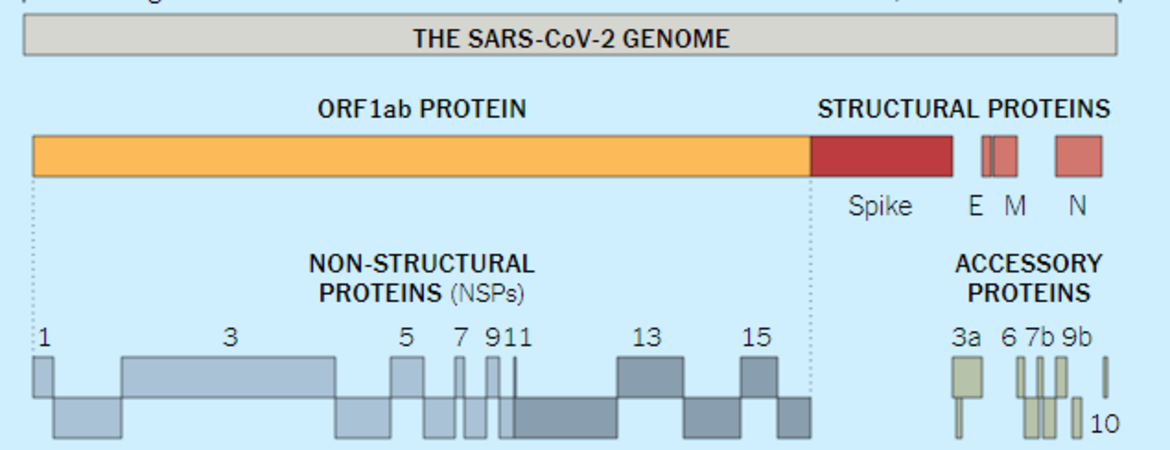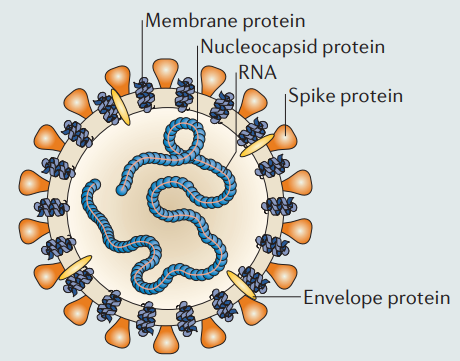
Viruses are simple things- they consist of a string of DNA or RNA wrapped in protein. Yet they have no machinery to make proteins, not even their own. How can they be so pathogenic, giving rise to diseases ranging from polio to influenza and now, to the devastating new pandemic, Covid-19?
Pathogenic viruses, including SARS-CoV-2 (responsible for Covid-19), gain entry to a susceptible host’s cell and commandeer the cell’s protein synthesis machinery. Imagine a master chef inveigles himself into your house with only a thin recipe book, complaining that he lacks a kitchen, equipment or ingredients, so he takes over yours. You stand back and watch while he raids your pantry to create exotic dishes you’d never encountered before, based on the instructions in his recipe book. The resulting dishes are beautiful in their simplicity, but they are insidiously toxic to you. With you now ill, this invading chef takes total control of your kitchen and kicks production into high gear. Before you know it, the kitchens of all of your neighbors are similarly hijacked, busily creating the dishes of the few recipes in the invader’s recipe book.
The genome – the recipe book – of the SARS-CoV-2 virus carries about 30 protein recipes arrayed along the viral genome, an RNA strand, like beads on a string. The total length of the RNA is about 30,000 RNA bases. The proteins resulting from the recipes have varied functions. Some of the proteins are well characterized, while others remain enigmatic (See Figure 1).
Some 16 proteins—at least some of which are enzymes that conduct vital processes—are generated from one long stretch of RNA called an open reading frame (ORF). One of these proteins, MPRO, is crucial for viral replication, so drugs capable of inactivating this protein may be useful for controlling the disease (presuming the drug is otherwise safe, nontoxic and with tolerable/manageable side effects at therapeutically effective doses).
(Figure 1, from Corum and Zimmer, 2020)
In addition to these 16 proteins, there are several ‘structural’ proteins, mostly involved in the physical makeup of the virus. These are common to most or all Coronavirus strains, and include:
S—Spike glycoprotein
E—Envelope small membrane protein
HE—Hemagglutinin-esterase (Note: this protein is not present in SARS-CoV-2)
M—Membrane protein
N—Nucleoprotein.
The ‘Spike’ glycoprotein is the one that sticks out of the spherical virus body (“virion”) to provide the characteristic ‘crown’ appearance. The spike protein is also the one that binds tightly to the ACE2 receptor on susceptible human cells, allowing the virus to engage and infect the captured cell. See Figure 2 for graphic of Coronavirus structure.
(Figure 2, from Graham et al. 2013. https://www.nature.com/articles/nrmicro3143.pdf)
The Nucleoprotein, N, wraps and protects the RNA molecule inside the virus; the two together is called the nucleocapsid. E, HE and M are all membrane bound proteins in the spherical virus envelope.
As mentioned above, MPRO is one of the enzyme proteins translated from the ORF1a and b. MPRO is a protease, it cuts and processes the strung-together other proteins so they can function independently. MPRO is also one of several targets of drug research to control coronaviral disease. That is, if a drug can bind to or otherwise interfere with the activity of MPRO, the virus is unable to replicate, bringing the infection to a grinding halt. Several classes of drugs are known to inhibit MPRO and these are undergoing intense scrutiny to determine if they can be used therapeutically to treat Covid-19. A recent paper from Jin et al. (April 9, 2020) describes the protein, M-pro, and putative drugs that may inhibit it. Other products of this ORF include the RNA-dependent RNA polymerase, necessary for the viral replication. Importantly, this RNA polymerase is blocked by the drugs remdesivir and favipiravir, hinting at additional possible drugs to test against SARS-CoV-2.
Eventually, scientists using molecular genetics and other skills will identify and develop drugs to treat Covid-19, and develop vaccines to protect against future infections. In the meantime, the best protection is personal isolation. To keep yourself from becoming infected, and to protect against spreading the virus to others, avoid other people as much as possible. Just stay home!
Notes and technical links:
Graham, Rachel L., Eric F. Donaldson and Ralph S. Baric. A decade after SARS: strategies for controlling emerging coronaviruses. Nature Reviews Microbiology. December, 2013. doi:10.1038/nrmicro3143
Link to the SARS-CoV-2 Coronavirus genome:
https://www.ncbi.nlm.nih.gov/nuccore/NC_045512.2
(including the MPRO gene (part of ORF1a and b) at base location 10055-10972.)
Corum, Jonathan and Carl Zimmer. April 3, 2020
Bad News Wrapped in Protein: Inside the Coronavirus Genome
https://www.nytimes.com/interactive/2020/04/03/science/coronavirus-genome-bad-news-wrapped-in-protein.html?smtyp=cur&smid=fb-nytimes&fbclid=IwAR1kVMltNcpCxaRiol2hv9pTlUvfVDMg13yMvqhhUAmf0jeV4omuwRO7lzg
Jin, Z. et al. Structure of Mpro from COVID-19 virus and discovery of its inhibitors. Nature, 2020. https://doi.org/10.1038/s41586-020-2223-y
https://www.nature.com/articles/s41586-020-2223-y_reference.pdf

